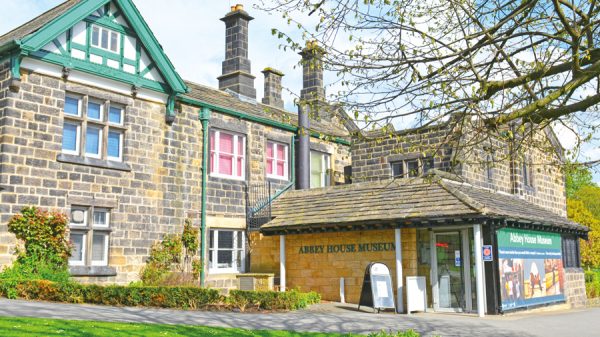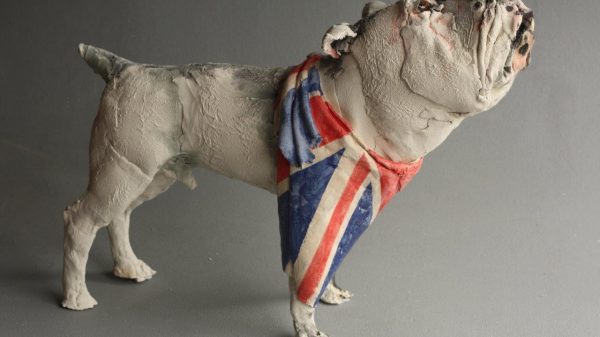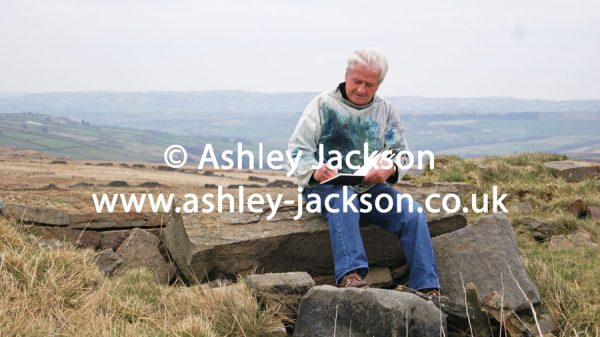Steve Ward lives in Kippax, Leeds and is a freelance writer and genealogist with a particular interest in circus. He has researched the role of circus in education and ran his own award winning youth circus group for many years in Leeds. He also devises and directs circus shows with young people.
This month Steve has kindly provided us with a fascinating and interesting insight about the history of the circus, its colourful characters and why it became so popular entertaining crowds throughout the world and the more local visits to Yorkshire.Enjoy!!
[private]Sawdust In My Shoes
As a small child I was taken to see Bertram Mills’ Circus. It was my first visit to a circus and I remember vividly the damp earthy smell, the rough wooden seat, the music and the vibrant colours, especially Coco the Clown’s crazy costume.
To me he was a very tall, painted, ginger-haired monstrosity in a colourfully loud and baggy checked coat. He was both terrifying and fascinating – he scared me and yet he made me laugh. He plucked me out of the audience to take part in one of ‘tricks’ and there, in the spotlight with the audience cheering me I was hooked! Since that day I have had ‘sawdust in my shoes’.
Only much later did I discover what a rich and fascinating history the circus has. It seems to be something that we take for granted; something that has always been with us and, in a way, it has. Physical circus skills have been with us ever since the first man manipulated three objects in the air at the same time, or stood on another’s shoulders, or balanced on a narrow branch. But the circus as we recognise it today is relatively modern.
2014 marks the 200th anniversary of the death of Philip Astley; the man widely recognised as the father of the modern circus. An apprentice cabinetmaker, his real passion was horses. By the age of 17 he was already a skilled horseman and he enlisted with a cavalry regiment at the first opportunity. Astley saw active service with distinction against the French in Germany. On being discharged in 1765 he dreamed of performing ‘feats of riding’ to make a living and so made his way to London. In 1768 he acquired a piece of land called ‘Halfpenny Hatch’ on the south bank of the Thames; a site now covered by Waterloo Station. Astley pegged out a circular ring, or ‘ride’ as he always called it but, contrary to popular belief, he did not invent the ‘circus ring’ as such, nor did he ever refer to his shows as the ‘circus’; that was left to a rival of his, Charles Hughes. By 1780 Astley had amassed enough money to build ‘Astley’s Royal Grove’; the first fully enclosed venue for his performances, which now included a clown, a strong man and a wire walker.
So popular were his performances that a visit to Astley’s is mentioned by Charles Dickens and Jane Austen in their writings. Rival companies soon appeared and by the early nineteenth century there were many circuses around the country. The north of England, and particularly Yorkshire, was a popular location. The circus was seen as both an entertainment and a source of information and for many it was a way of keeping in touch with current affairs; a sort of Pathé News of its time. In addition to traditional entertainments there would be spectacles depicting the Battle of Waterloo or the war in the Soudan (now known as Sudan) and other such conflicts of the period. For some there was also an element of titillation in a visit to the circus. Female performers wearing diaphanous clothing and athletic young men wearing tight fitting body-stockings, referred to as ‘fleshings’, were always well received!
In the early days circuses were often associated with travelling fairs. The day before a country fair, a small group of horse-drawn wagons would arrive and the circus would be pitched. If it was wet, then wooden hurdles would be laid on the ground to help the fairgoers across the mud. A platform was set up in front of the tent and on the day of the fair, the circus owner, resplendent in mock military uniform, stood upon it banging a drum to gain attention. With loud cries of ‘Roll up!’ or ‘Step up!’ he would gather the crowd and then offer them sights they had never seen before. He might promise ‘riding skills as seen on the battlefields of Germany,’ or ‘feats as witnessed only before in the mighty amphitheatres of London’. Often he might display his dappled or piebald horses upon the platform with him while his clown bantered with the crowd.
As soon as the crowd had parted with their money and entered the tent, the horses would be led around the back to enter the ring. Standing or sitting on straw bales, the audience was then entertained with a comparatively brief show led by the circus owner as the ‘ring master’, keeping up a continuous banter with the clown as he performed his antics. Acrobats and tumblers might perform flips and somersaults and a pretty girl often graced the tightrope. The main focus was the horses and the tricks performed upon them.
At the end of the show as the crowd departed, the horses were led back round to the platform and the circus owner would begin his patter again for the next show. And so this pattern continued throughout the day, often well into the evening, with shows being given as long as seats could be filled. At the end of the fair, the circus would take down its tent, load its wagons, harness up the horses and move on to the next pitch, leaving only a well-trodden patch of grass and memories behind it.
This is a very rustic image and whilst it is true that many circuses visited market towns such as Keighley, Skipton and Ripon, it was in the industrial heartland that the circus was particularly popular. By mid nineteenth century there were at least seven semi-permanent circus buildings in use at various times in the centre of Leeds alone. According to the advertising of the time there were venues in Basinghall Street, New Station Street, Boar Lane, White Cloth Hall Yard, King Charles Croft, Commercial Street, Bank Street and Cookridge Street. Circuses also occasionally appeared at the Cattle Market and in the Royal Park on Woodhouse Moor, as well as travelling Menageries using an open space at the junction of Albion Street and Boar Lane.
Circuses were also often convenient venues for mass rallies. In 1852 Franconi’s Circus on Boar Lane witnessed a heated rally calling for the Repeal of the Corn Laws and later, in 1879, at Adam’s Circus on Cookridge Street, Thomas Parnell addressed a meeting of 4000 Irish supporters in the city.
Special trains were laid on to ensure that evening circus-goers would be able to get home to more outlying towns. In 1867 Newsom’s Grand Circus arranged for an 11pm train to run from Leeds to Huddersfield and all stations in between.
Circus parades were always popular and, as the circus wound its way through the streets, thousands of people would turn out to watch this free show. Some were very spectacular and when Howe and Cushing’s American Circus visited Leeds in 1857 the Leeds Mercury recorded the event, with special reference to the never-before-seen Apollonicon;
“Howe and Cushing’s American Circus – Quite a sensation was created in some of the principal thoroughfares of Leeds, yesterday morning, by the arrival in grand procession of this United States Company of Equestrians. Foremost amongst the novelties was an immense musical instrument, denominated an Apollonicon, [large chamber organ] drawn by forty cream-coloured horses, four abreast … The entertainment is altogether very much above the ordinary run of travelling equestrians, and is wholly free from anything objectionable”.
These parades were not always without mishap. In one of Howe and Cushing’s parades two children were crushed under the wheels of a wagon. Similarly in a parade of Footit’s Circus on Kirkgate in Huddersfield, a pole-pin broke on a carriage which then broke loose and overturned, injuring several people.
Indeed, a visit to a circus could be quite hazardous. At Sanger’s Circus in North Yorkshire a woman was killed when she was trampled by a run-away horse. Animals involved with the circus or menagerie were very often responsible for injuries to the public. In Bradford a bear being fed by its trainer broke loose. In panic people fled in all directions and a caged leopard struck out and severely lacerated the head and face of a boy. In another incident at Wombwell’s Menagerie a drunkard stupidly teased a lion through the bars of its cage and was lucky enough to walk away with only a lacerated arm!
It was equally as hazardous for performers. Broken limbs were frequent, especially in falls from horses, as witnessed in Scarborough and Rotherham. Fatal injuries were not unknown and an aerial gymnast fell to his death during a performance in Hull. Fires, blow-downs and collapses were common occurrences. In 1853 Hernandez and Stone’s Circus was completely destroyed by fire whilst in Halifax, fortunately without loss of life. In 1848 in Leeds a gallery collapsed at Pablo Fanque’s Circus in King Charles Croft. Although many people were injured there was only one fatality, the owner’s wife. She is buried in St George’s Field, formerly the Woodhouse Cemetery, now within the University of Leeds campus. But for all the calamities that befell the circus in Yorkshire fatalities were actually relatively few, unlike in 1881 when a circus fire in Russia claimed the lives of more than 500 people.
Yorkshire has also witnessed the bizarre; none more so than this particular incident, recorded in the Bradford Observer on the 2nd May 1850;
‘A very singular affair came off at Leeds on the 24th. Mr Baker, the attitudinarian of Cooke’s Circus undertook for a wager of L10 [£10] to compress himself in a basket two feet seven inches in length, one foot seven inches in width and the same in height; and in this manner to be conveyed on a car to the railway station, to be despatched to Bradford at two o’clock for luggage price and to return to Leeds before half-past six. Mr Baker is five feet ten inches in height. At the appointed time he made his appearance in front of the circus wearing a crimson skin dress. He placed his great-coat at the bottom of the basket, then got in himself, taking with him a bottle of brandy and a few oranges. The basket was closed, and in this state was Mr Baker conveyed to Bradford, and deposited at the Bermondsey Hotel. Here he remained for a considerable time, when he was reconveyed to the station and despatched to Leeds, where he arrived a little before half-past six, thus winning his singular wager. He was brought from the railway on a coach, and in the presence of a great crowd was liberated from his confinement in front of the Circus.’
The circus has been like a turning wheel; from the nineteenth century golden era its popularity faded after World War 1, only to rise again after Word War 2. Then the ‘Big Three’ circuses of Bertram Mills, Billy Smart and the Chipperfields dominated. All were popular visitors to Yorkshire at that time. During the 1970s and 80s the circus experienced another period of decline, with circuses using animals being heavily criticised. The Government has now begun to address this issue and to legislate against the use of wild animals in performance. Now the popularity of the circus as wholesome family entertainment is on the rise again. The circus is welcome in Yorkshire and always will be. So let’s celebrate the circus this year!
Steve Ward’s book ‘Beneath the Big Top; A Social History of the Circus in Britain’ is to be released on September 30th by Pen & Sword Ltd, price £12.99.
Steve is available for talks, interviews and feature writing
genward21@gmail.com – 07805899132, – www.steve-ward.net[/private]







